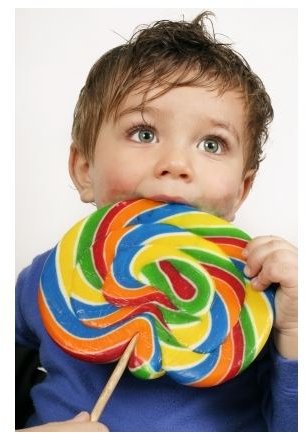Child Food Portions
Healthy Portions for Kids

It can sometimes be difficult to determine just how much your child should be eating. In today’s world of “super-sized” everything, it can be a challenge to get your kids to eat the proper child food portions, and not overeat. The recommended portions vary by age, but once you and your child learn what healthy-sized portions look like, it can be easy to stick to a healthy diet.
Children Ages 2 to 3
Children in this age group vary in their eating habits, sometimes on an almost daily basis. Some days they barely want to eat anything, and on other days they can eat an entire box of cookies if you aren’t careful. Here are the basic daily child food portions for those who are two to three years old.
Grains – 3 ounces
Some examples of what 1 ounce of a grain product represents includes a cup of dry breakfast cereal, a half-cup of cooked oatmeal, a half of an English muffin, or a half-cup of spaghetti or rice.
Vegetables – 1 cup
Some kids say they despise vegetables, but with a little creativity, one cup of vegetables per day is completely doable.
Fruit – 1 cup
Fruit is usually easier to work into a child’s diet, because it is sweet, and kids are generally very fond of sweet foods.
Milk – 2 cups
Fruit-flavored ice cream and low-fat ice cream are kids’ favorites.
Meat and Beans – 2 ounces
Examples of one ounce include one egg, a tablespoon of peanut butter, or a fourth of a cup of baked beans.
Oils – 3 teaspoons
Examples of one teaspoon include a tablespoon of peanut butter, or a tablespoon of mayonnaise or Italian salad dressing.
Children Ages 4 to 8:
Children in this age group are growing fast and need enough good nutrition, without filling up on junk food and empty calories, so their portions are now a little larger. This age group tends to be more open to eating new foods as well. Examples of food portion sizes can be referred to above.
Grains – 4 to 8 ounces
Vegetables – 1 ½ cups
Fruit – 1 to 1 ½ cups
Milk – 2 cups
Meat and Beans – 3 to 4 ounces
Oils – 4 teaspoons
Children Ages 9 to 13:
Recommended portion sizes vary a little for this age group between boys and girls, and the differences are noted below. Examples of portion sizes can be referred to above.
Grains – 5 ounces (6 ounces for boys)
Vegetables – 2 cups (2 ½ ounces for boys)
Fruit – 1 ½ cups
Milk – 3 cups
Meat and Beans – 5 ounces
Oils – 5 teaspoons
What About Treats?
Kids like treats, and if portioned appropriately, they can be added to a child’s diet. It is best to estimate treats by total calorie count, according to the amounts listed below. However, it can be best to use foods in the other nutrition categories as treats, such as a half-cup of low-fat ice cream, or a cup of fruit-flavored yogurt, instead of treats with empty calories.
Ages 2 to 3 – 165 calories
Ages 4 to 8 – 170 calories
Ages 9 to 13 – 130 calories (195 for boys)
What Are Some Ways To Control Portion Sizes?
Kids can be so accustomed to seeing super-sized portions that proper food portions might look too small to them. You can help put things into the proper perspective by using smaller plates, and by packaging items such as crackers and cookies into individual bags. This can help adjust a child’s view of proper sized food portions.